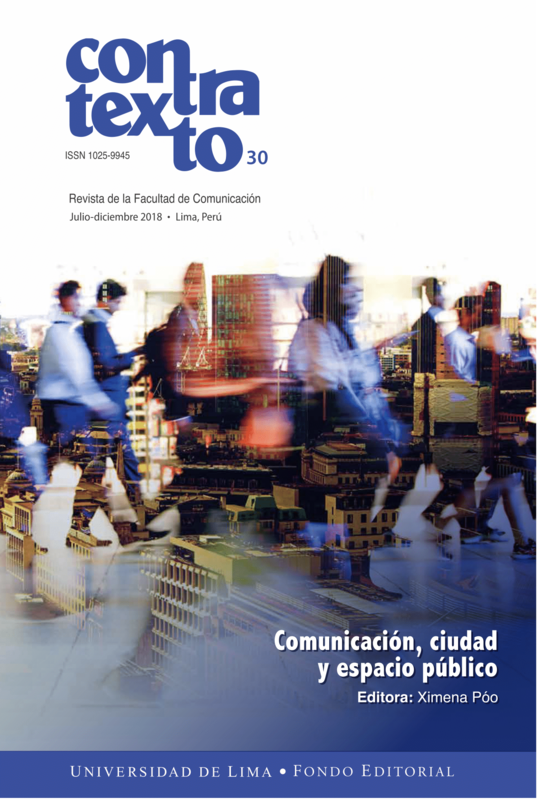Representaciones de la ciudad ayacuchana en dos películas peruanas, durante el conflicto armado interno
DOI:
https://doi.org/10.26439/contratexto2018.n030.3155Resumen
En los últimos veinte años del siglo pasado, el Perú vivió la etapa de violencia más grande de su historia, la cual dejó más de 69 000 víctimas. Finalizado el conflicto, la ficción cinematográfica —entre otros— empezó a abordarlo, tanto desde la capital como desde Ayacucho, ciudad con la mayor cantidad de víctimas. La ciudad andina ha estado casi ausente de la cinematografía limeña, mientras que ha sido el espacio común donde se desarrollan las acciones en la cinematografía ayacuchana. Esta visión reproduce una mirada de cómo se vivió el conflicto armado interno (CAI) peruano en la costa y en el ande. En este artículo analizamos la representación cinematográfica de Ayacucho en dos películas: Sangre inocente, de Palito Ortega, y La última noticia, de Alejandro Legaspi. La ciudad es el espacio por donde discurren los personajes y donde se dan las acciones que los enfrentan al conflicto armado. Este trabajo es abordado a partir de un acercamiento cualitativo: se examinan las películas a través de matrices que identifican los elementos configuradores de las ciudades como espacio de vida de la población durante el CAI, y se analiza cómo las películas pueden configurarse como un artefacto cultural que permite construir memoria sobre lo que fue el pasado y sobre cómo fue la vida de los habitantes urbanos andinos durante esa época.
Descargas
Publicado
Número
Sección
Licencia
Todos los trabajos publicados están sujetos a una licencia CC BY 4.0 Creative Commons (actualizado el 1 de marzo de 2021).
El contenido de la revista se puede compartir en cualquier material o formato. Asimismo, se puede adaptar, contribuir y transformar. Ambas posibilidades sólo están permitidas en la medida en que cumplan las siguientes condiciones:
- Atribución: Se debe otorgar crédito donde sea debido, proporcionar un enlace a la licencia e indicar los cambios en caso se realice alguno. Esto debe hacerse de la manera que se considere apropiada, sin sugerir que el licenciante lo promueva a usted o su uso del material.
Derechos de propiedad
Los derechos patrimoniales de Contratexto se publican bajo una licencia Creative Commons BY 4.0, lo que permite a los autores mantener los derechos patrimoniales de su obra sin restricciones.
Si un trabajo publicado en Contratexto fuera copiado, distribuido, difundido o cualquier otra actividad contemplada en la licencia antes mencionada, se deberá mencionar de manera visible y expresa al autor o autores y a la revista.
Auto-archivo
Esta revista permite y anima a los autores/as a publicar artículos enviados a la revista en sus sitios web personales o en depósitos institucionales, tanto antes como después de su publicación en esta revista, siempre y cuando proporcionen información bibliográfica que acredite, si procede, su publicación en ella.


















